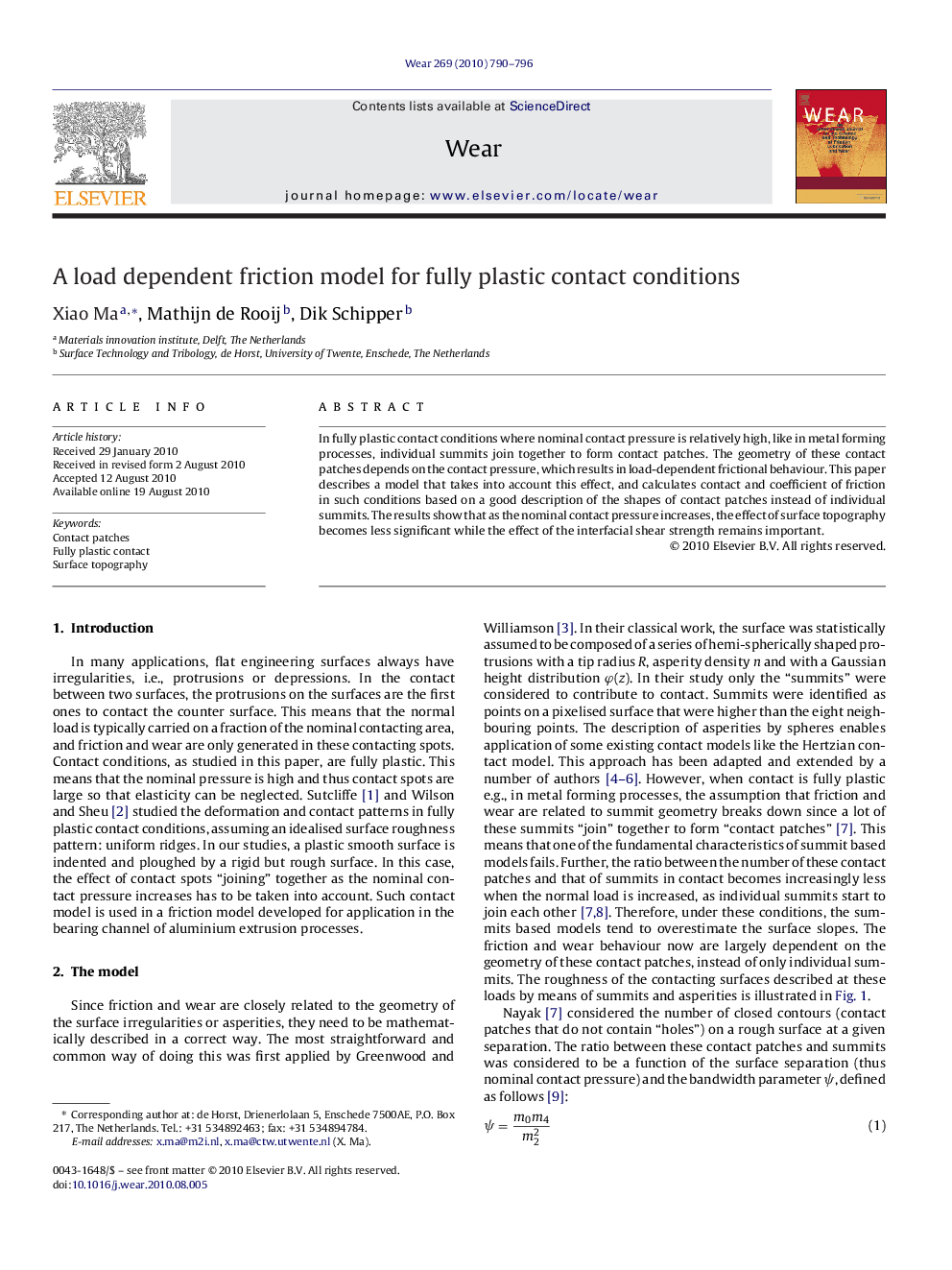| کد مقاله | کد نشریه | سال انتشار | مقاله انگلیسی | نسخه تمام متن |
|---|---|---|---|---|
| 618493 | 1455030 | 2010 | 7 صفحه PDF | دانلود رایگان |

In fully plastic contact conditions where nominal contact pressure is relatively high, like in metal forming processes, individual summits join together to form contact patches. The geometry of these contact patches depends on the contact pressure, which results in load-dependent frictional behaviour. This paper describes a model that takes into account this effect, and calculates contact and coefficient of friction in such conditions based on a good description of the shapes of contact patches instead of individual summits. The results show that as the nominal contact pressure increases, the effect of surface topography becomes less significant while the effect of the interfacial shear strength remains important.
Research highlights▶ A method of describing contact under fully plastic condition, taking into account the coalescence of contact spots as the nominal contact pressure increases, has been developed. Using this method, multi-asperity contact between two nominally flat surfaces can be transformed into a set of elliptical paraboloid, with their shape accurately defined by several parameters. This method is scale-independent. ▶ It has been found that the geometry of contact patches vary when the nominal contact pressure changes. More blunt contact patches are present when pressure is high. Since friction is closely related to surface topography, this leads to a load-dependent coefficient of friction, which has been previously observed. ▶ It has been found by applying Challen and Oxley's friction model, that the coefficient of friction is hardly dependent on surface topography at high nominal contact pressure. The difference only manifests at low pressure levels, where roughness increases friction. The effect of fhk however, persists at all pressure levels.
Journal: Wear - Volume 269, Issues 11–12, 28 October 2010, Pages 790–796